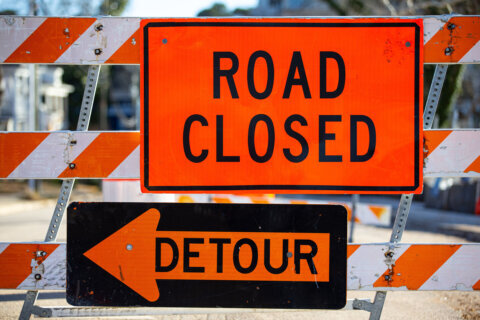Some folks think sunburns are no big deal, but a D.C. burn surgeon recommends professional care when skin blisters or sunburn symptoms include feeling sick.
“People do need to know that if they’ve had a sunburn and feel all around lethargic or bad or nauseated, dizzy, things like that, that can be an emergency. And that might mean you need IV fluids,” Dr. Taryn E. Travis, of MedStar Washington Hospital Center, said.
Travis is an attending physician in The Burn Center at MedStar Washington Hospital Center and an assistant professor of surgery at Georgetown University School of Medicine.
She said sunburns that blister or cause breaks in the skin are actually second-degree burns that can increase risk of developing skin cancer. More immediately, if the blisters open up, that increases risk of infection or problems with scarring or pigmentation. Skin can change color and become lighter or darker in areas of sunburn injury.
“And so generally, if people notice that they have blistering, after any kind of burn, we would want them to come see us, so that we can help them manage that most effectively and minimize complications,” Travis said. “It’s important for people in the D.C. metro area to realize that the burn center is a resource to them.”
Less serious sunburns can be uncomfortable. Travis has advice for helping ease the pain.
“If you don’t have reasons not to take acetaminophen or ibuprofen, those are good pain relievers for sunburn. They knock down some of that inflammation that you feel,” she said.
Moisturizer free of perfumes and dyes can be soothing to sunburn-irritated skin.
“What we do not want people to use are things like butter, mustard, gel from an air freshener. We see all kinds of home remedies with people looking for symptom relief from sunburns,” she said.
Also, don’t use antibiotic ointments.
“Generally speaking, sunburns don’t need antibiotics, and we will often see people who use things like triple antibiotic ointments and actually caused themselves a rash that can worsen the sunburn,” Travis advised.
Travis provides a full list of do’s and don’ts advice related to sunburns.
You can get sunburned anywhere on the body, but Travis said common areas that people forget to protect adequately with sunscreen, or by covering up, include the tip of the nose, the ears, tops of the feet and the backs of hands, especially now when everyone’s washing their hands so frequently.
“There are sunscreen sticks that are pretty easy to keep in a pocket or a purse that are helpful for the backs of the hands or the tops of the feet if you’re wearing sandals. And we always want to remind people to remember those ears. Ears are a really frequent area for skin cancers that our dermatology colleagues deal with,” she said.
Travis said lots of things can contribute to chances of developing skin cancer, which can run in families, but teens and young adults who experience five or more blistering sunburns increase risk of developing melanoma by 80%.
“And so if you have that in your history, it’s important to see a dermatologist for skin exams regularly,” Travis advised.
You can find additional advice for preventing sunburn on the MedStar Health website.








